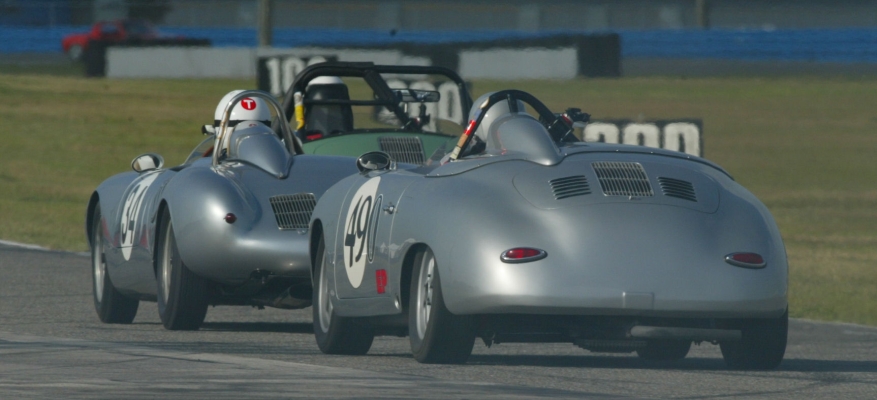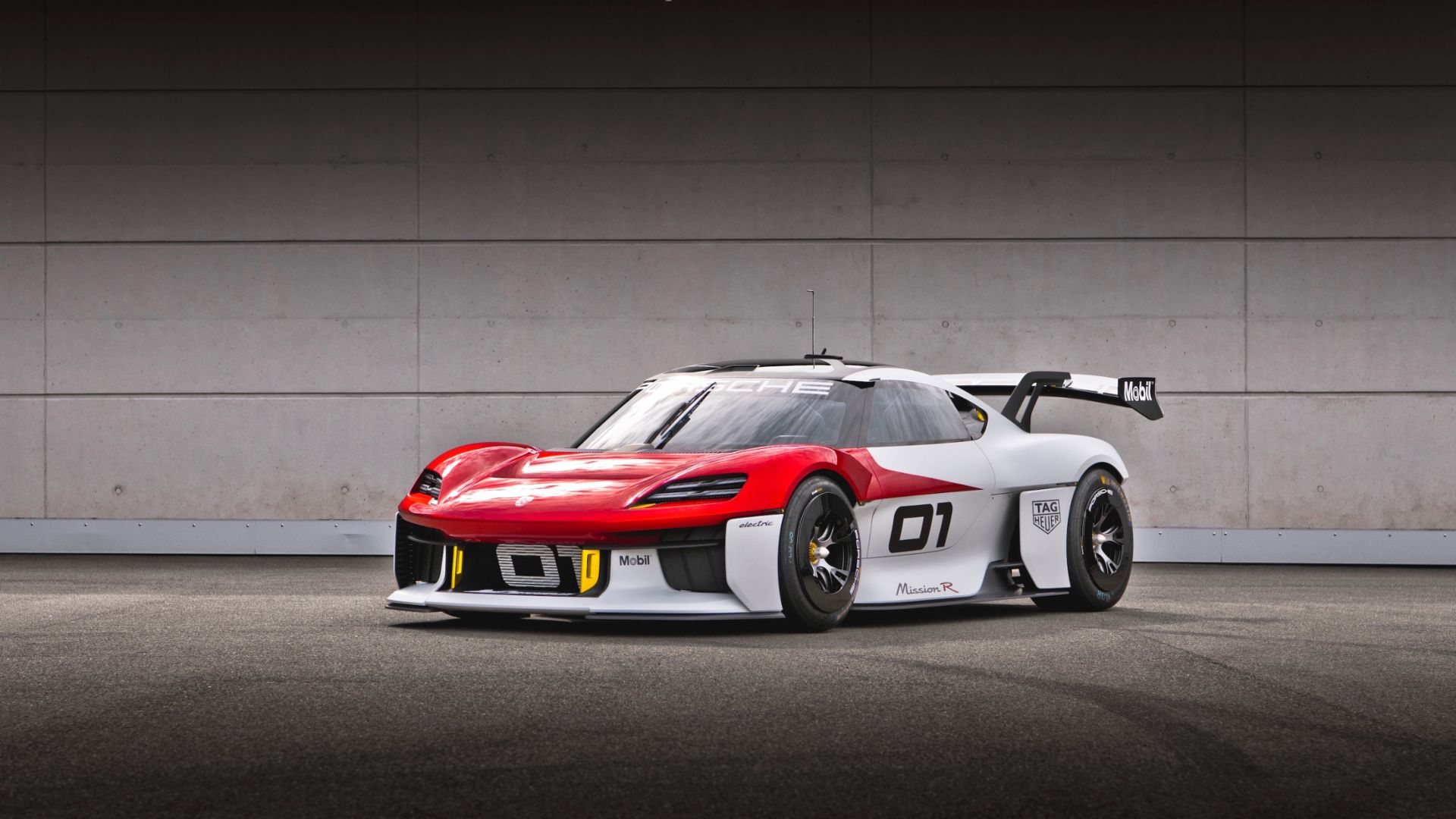
The Mission R embodies everything that makes Porsche strong: Performance, design and sustainability.
Right on time for the start of the IAA Mobility 2021 in Munich (from September 7-12), Porsche is to provide a spectacular look into the automotive future. The Mission R concept car combines state-of-the-art technologies and sustainable materials, such as natural fiber-reinforced plastics, with a passion for racing.
In addition to a progressive design, the extremely low-slung, all-electric competition car features the characteristic lines of the sports cars from Stuttgart-Zuffenhausen. The two newly developed electric motors incorporated in the Porsche Mission R deliver up to 1,073 hp (800 kW) in so-called qualifying mode. The battery capacity of around 80 kWh and the innovative recuperation system make sprint racing possible with no loss of output.
“Porsche is the brand for people who fulfill their dreams. This is also true in motorsports. We experience our innovative strength on the race track, demonstrate courage in pursuing new avenues and delight car owners with sporting performance,” says Oliver Blume, Chairman of the Executive Board of Porsche AG. “In addition to our involvement in the Formula E World Championship, we are now taking the next big step forward in electric mobility. The concept study is our vision of all-electric customer motorsports.”
The all-wheel drive car delivering more than 1,070 hp in qualifying mode accelerates from 0 to 60 mph in less than 2.5 seconds. Top track speed: over 186 mph. On the race track, the electric racer achieves the same lap time performance as the current Porsche 911 GT3 Cup. Thanks to newly designed electric motors and battery cells – all equipped with innovative direct oil cooling – the Porsche Mission R concept study produces a constant power output of 671 hp (500 kW) in race mode. So-called derating, i.e. reduction of the battery‘s power output due to thermal conditions, has been eliminated.
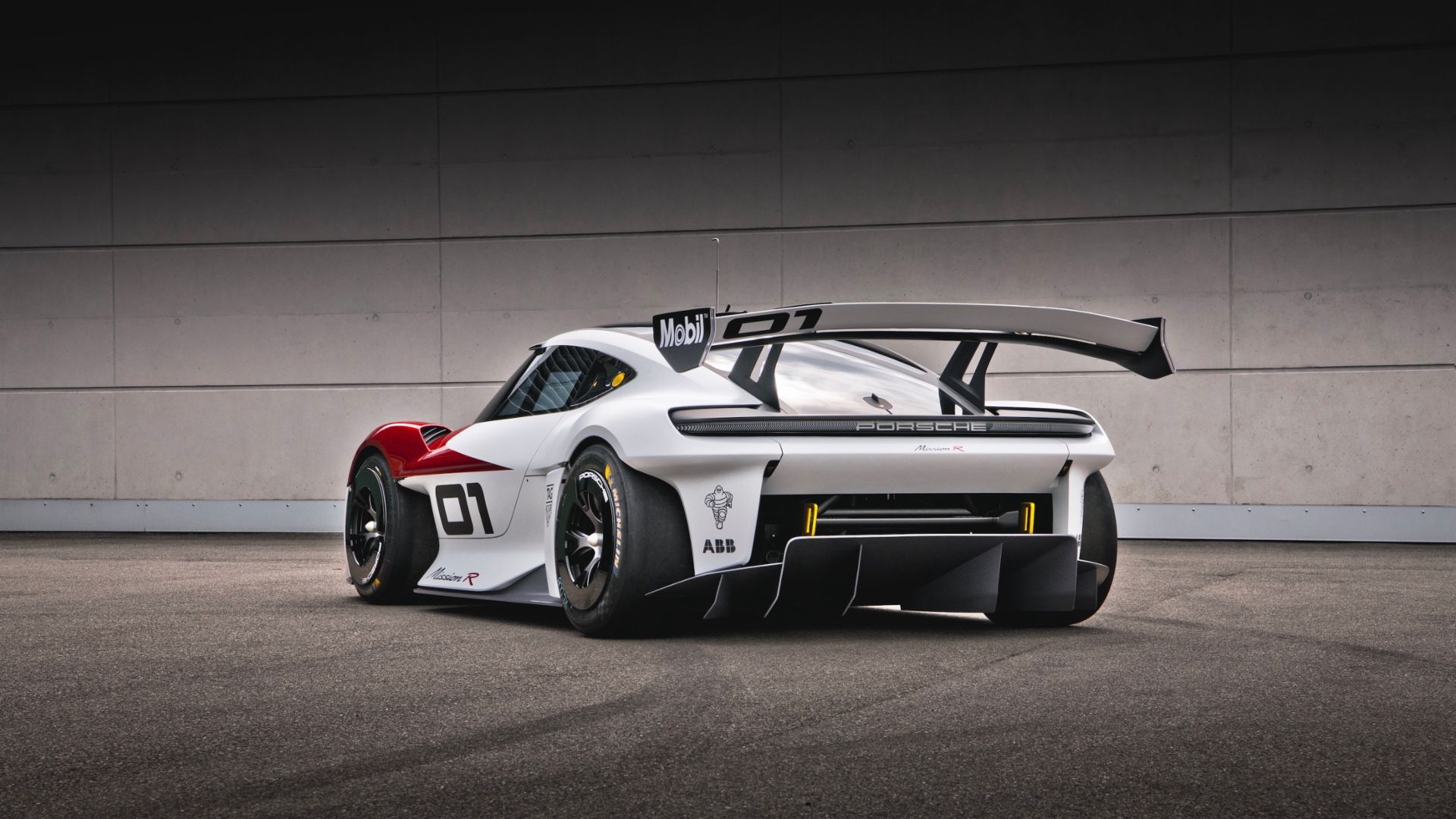
900-volt technology and Porsche Turbo Charging
An electric motor with up to 429 hp (320 kW) powers the front axle, while a maximum of 480 kW (653 PS) is delivered to the rear. Thanks to advanced 900-volt technology and Porsche Turbo Charging, a good 15-minute break from racing is all that is needed to charge the battery from 5 to 80 percent SoC (state of charge). Charging can take place with up to 340 kW. The Mission R also features a further development of Porsche Active Aerodynamics (PAA) with Drag Reduction System (DRS) on the nose section and rear wing. It comprises three louvres in each of the two side air intakes on the nose section as well as an adjustable, two-section rear wing.
In addition to the innovative, battery-electric drive concept, the body of the concept car also focuses on CO2 reduction and sustainability: it is largely made of natural fibre reinforced plastic (NFRP), the basic material of which is made from flax fibers obtained from farming. This ecological material is also used for the front spoiler lip, the diffuser and the side skirts. NFRP is used extensively in the interior of the Mission R, such as the interior door panels, the rear bulkhead and the seat.
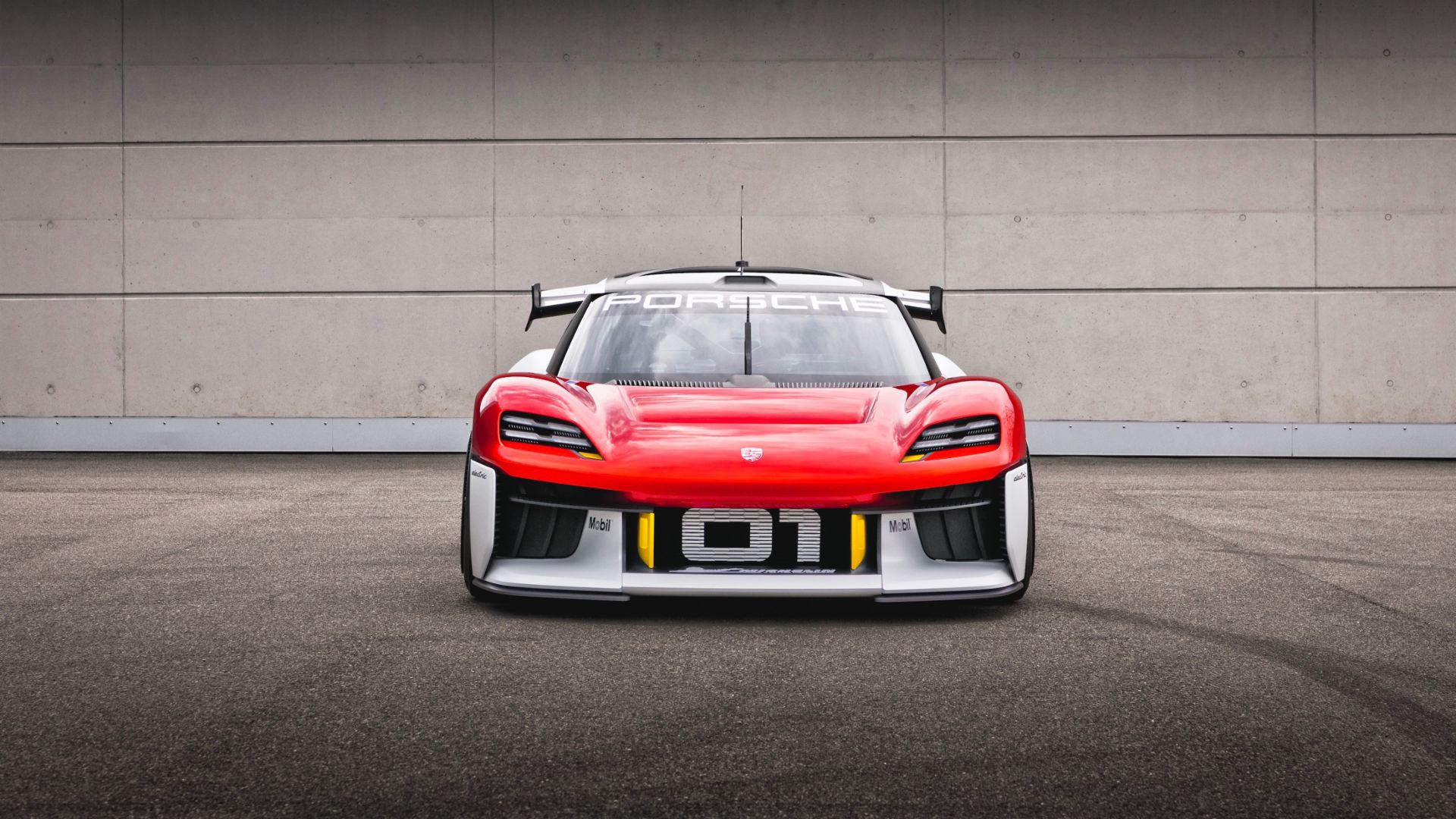
The interior design focuses on the driver in all areas.
An ergonomically placed display between the controls on the steering wheel shows relevant data during the race. The monitor above the steering column shows the images from the side mirror cameras and the central rear-view mirror camera. A touch display to the right of the seat can be used to call up the driver’s biometric data, for instance. Numerous other cameras in the interior can be used to provide exciting sequences for a live stream transmission.
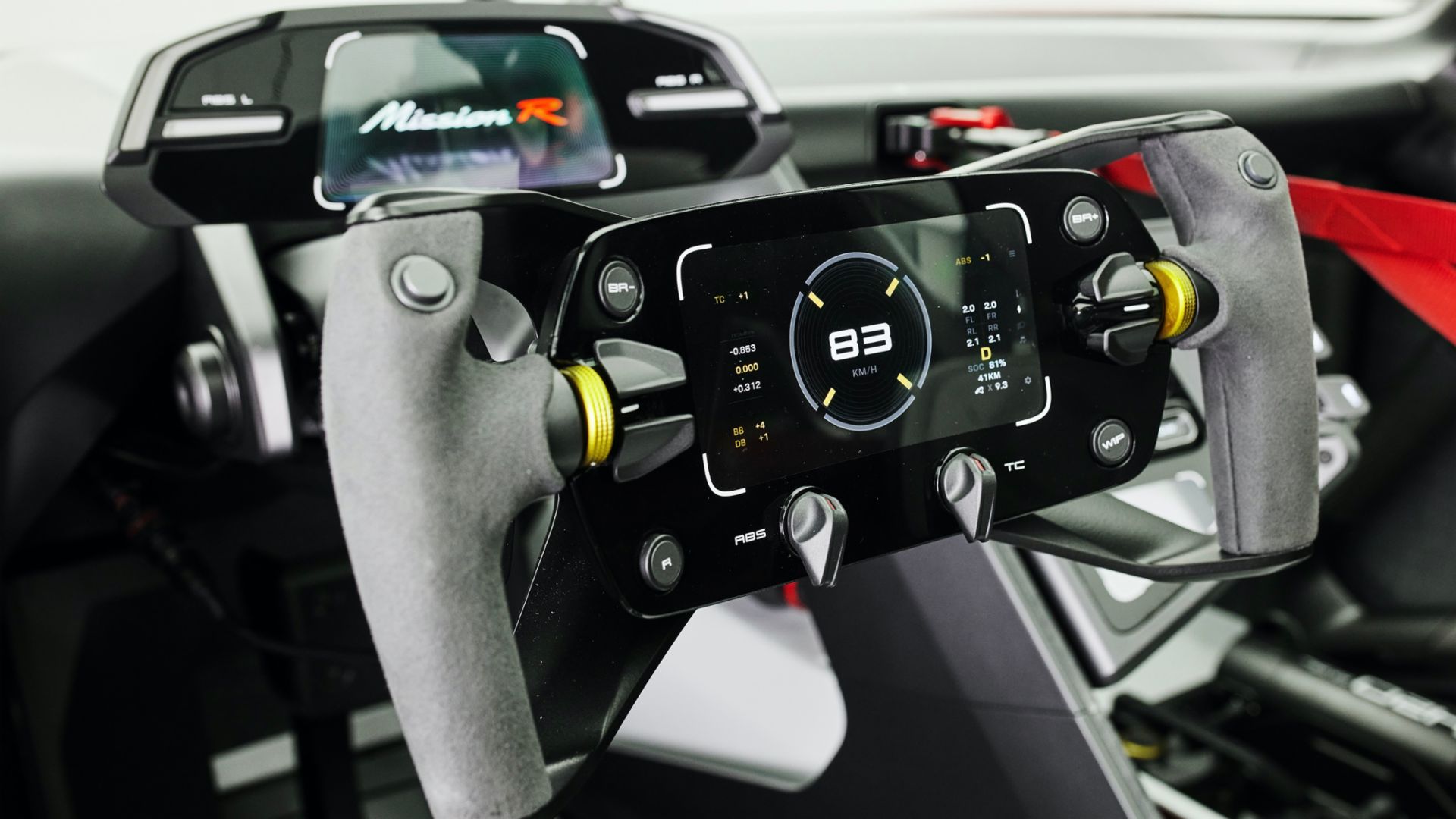
With the Mission R project, Porsche is bringing real and virtual racing closer together than ever before. The monocoque driver’s module in exactly the same form also doubles as an esports simulator. The safety structure made of carbon fibre composite material combines high protection potential for the driver with low weight and a distinctive look.
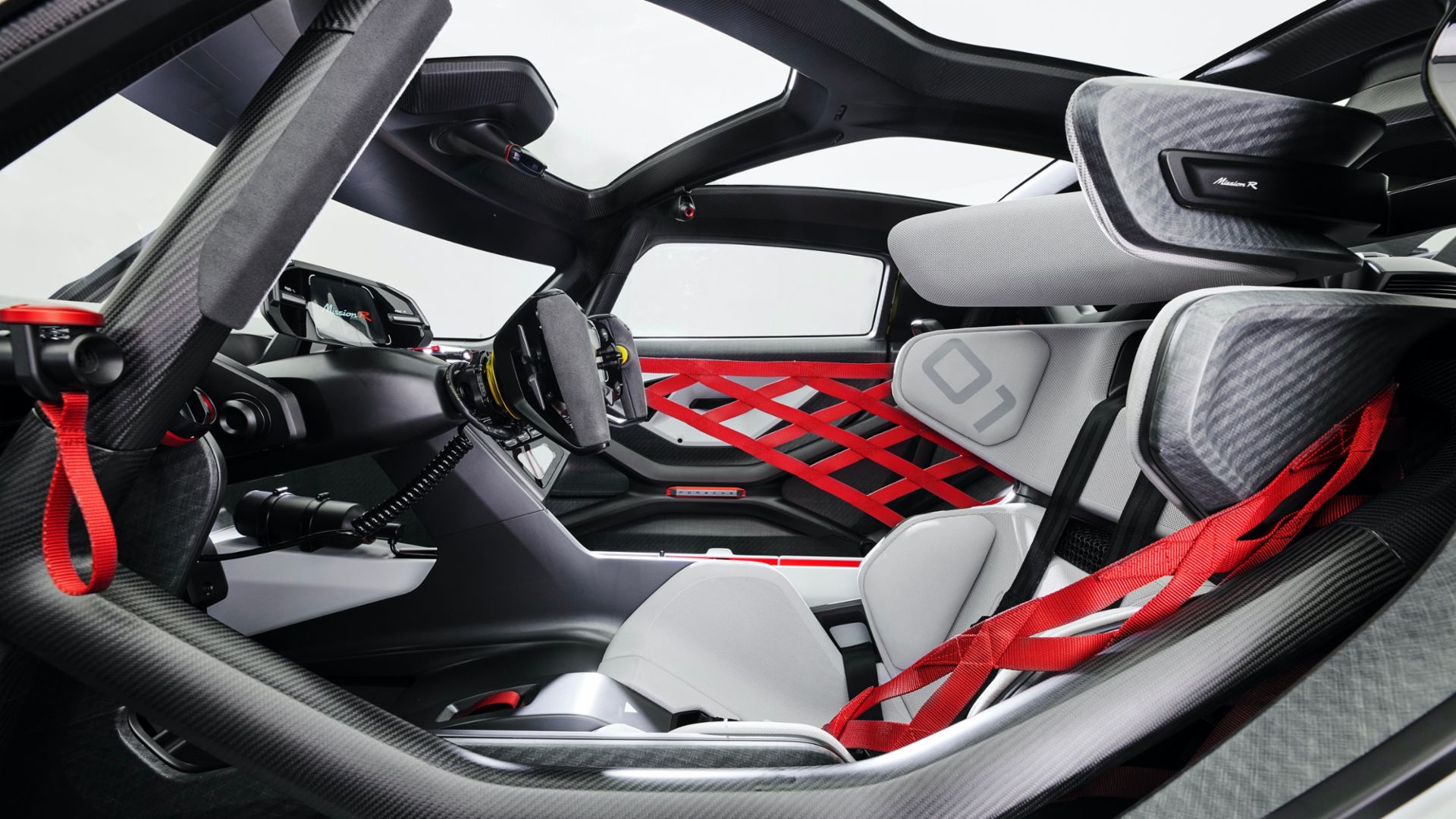
Porsche engineers and designers have named the newly developed carbon roof structure the “exoskeleton”. It combines safety cage and roof skin. At 4,326 millimeters (170.3 inches) in length, the Porsche Mission R is slightly shorter than the current 718 Cayman series, but it is noticeably wider at 1,990 millimeters (78.3 inches) and with an external height of 1,190 millimeters (46.8 inches) is also significantly lower
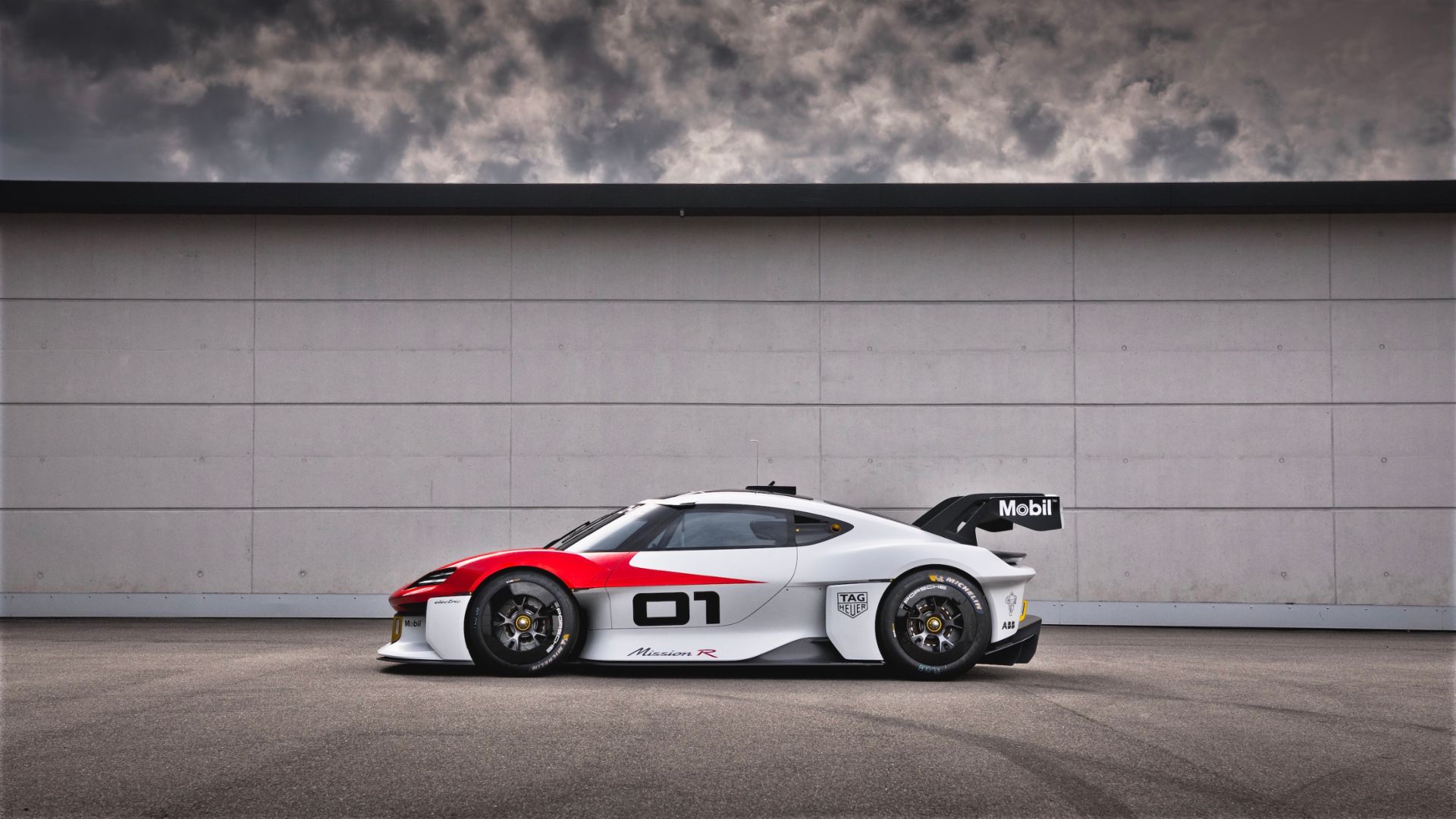
Source: Porsche



